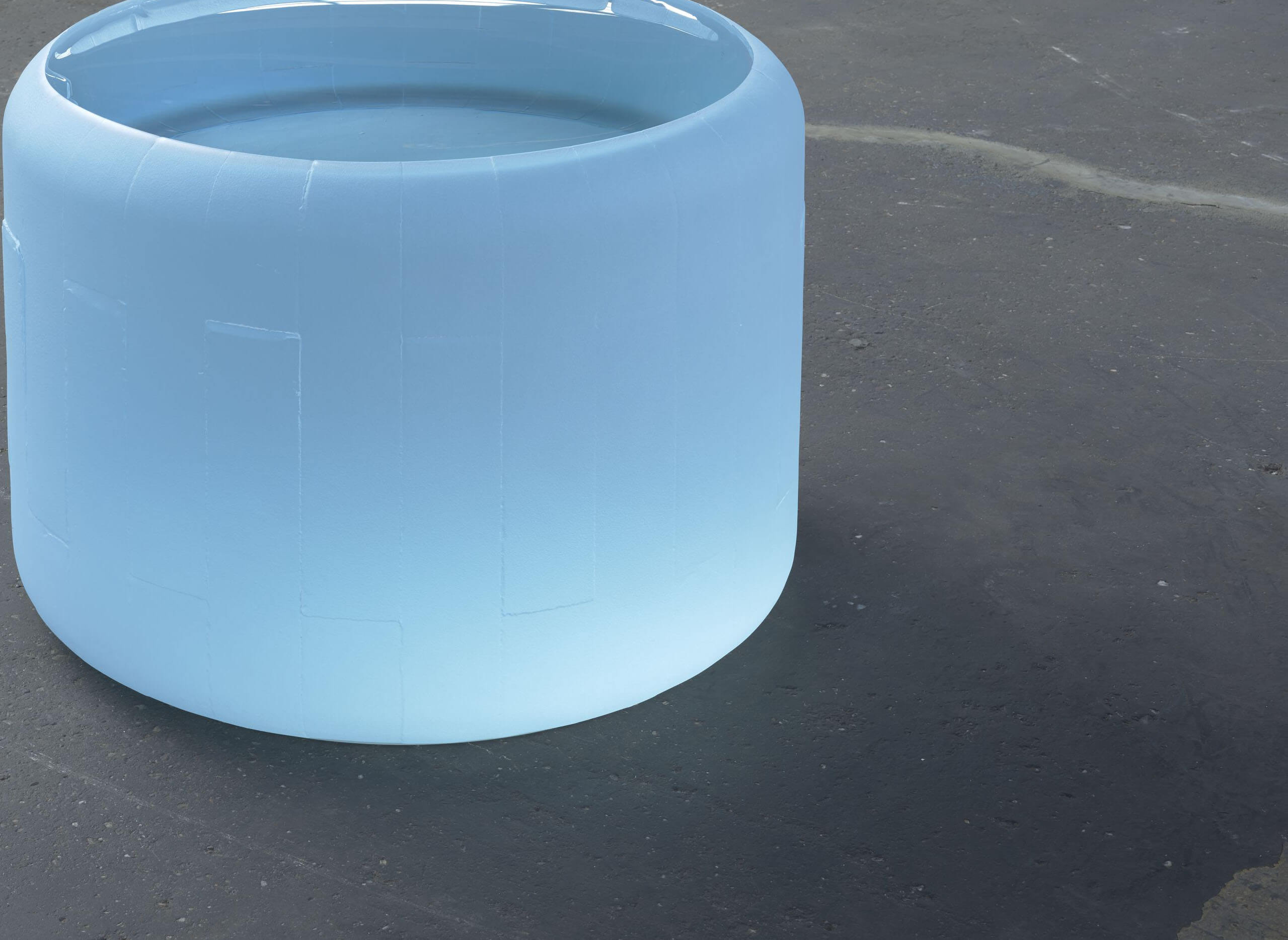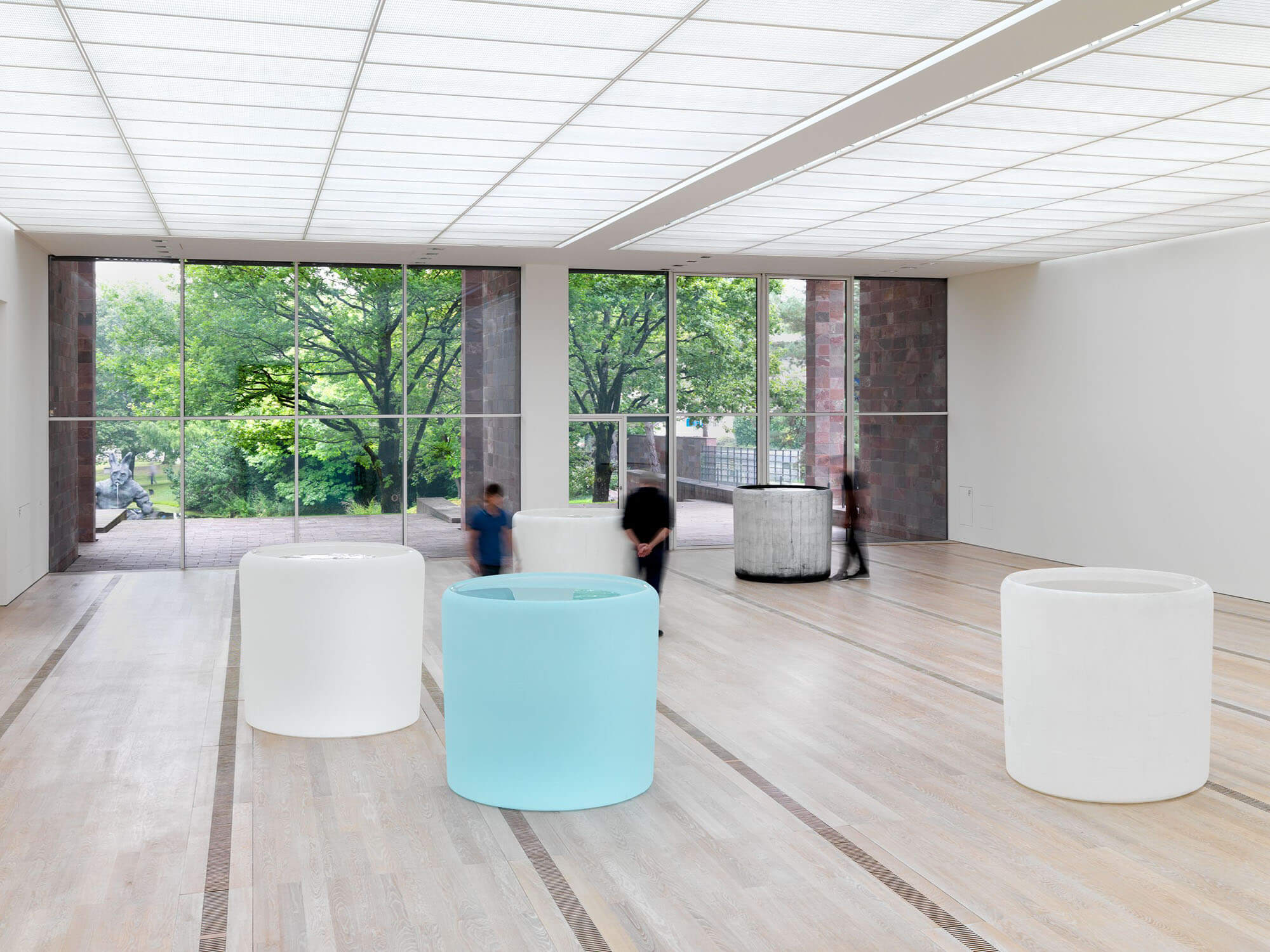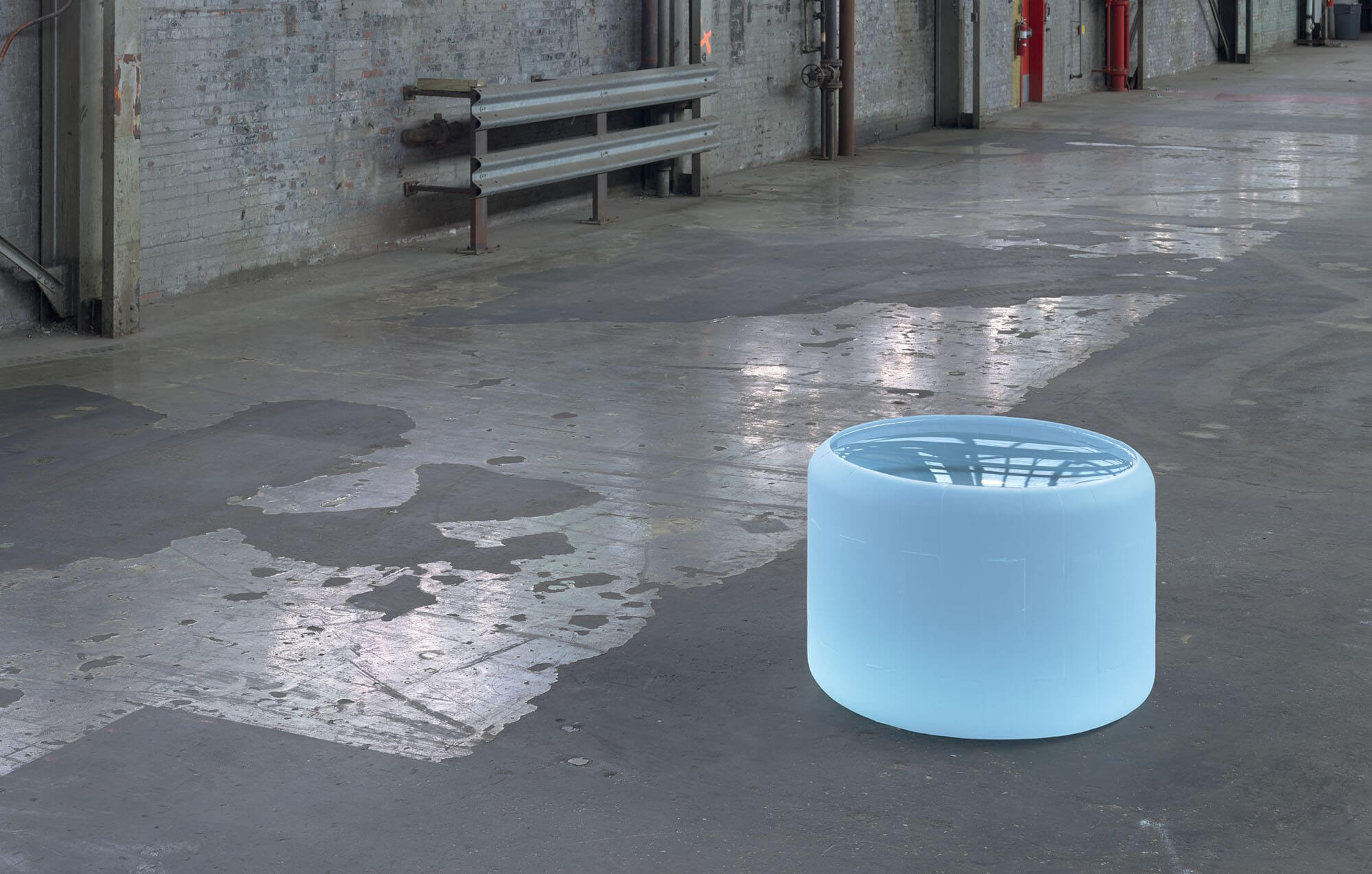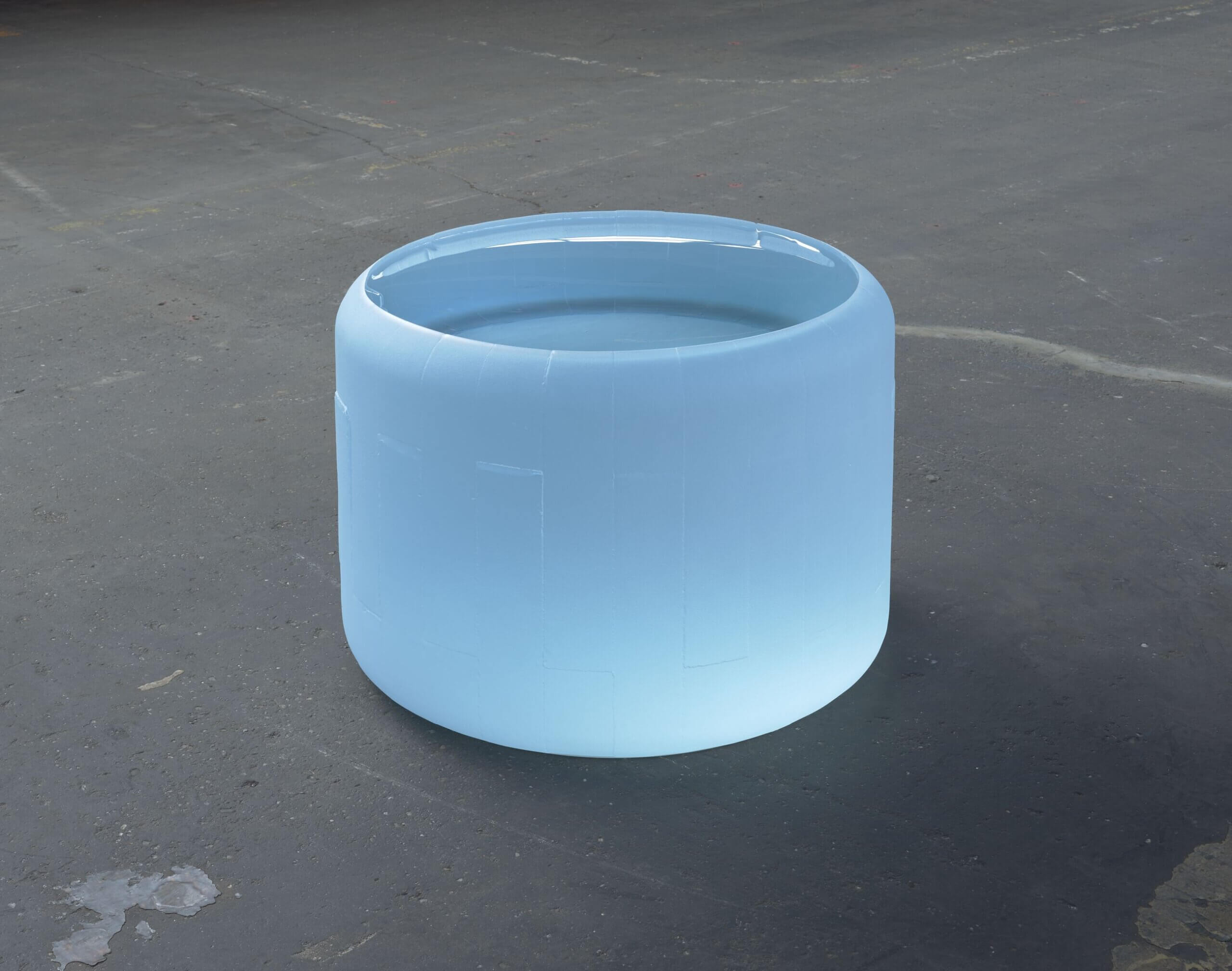
Roni Horn
2014 - 2016 Solid cast glass with as-cast surfaces, with oculus Unique 72.4 cm / 28.5 in (height) 106.7 cm / 42 in (diameter)
USD 1,500,000

Roni Horn
Using drawing, photography, installation, sculpture and literature, Roni Horn’s work consistently questions and generates uncertainty to thwart closure in her work, engaging with many different concerns and materials. Important across her oeuvre is her longstanding interest to the protean nature of identity, meaning, and perception, as well as the notion of doubling; issues which continue to propel Horn’s practice.
Untitled (‘The peeled white body of the beheaded whale flashes like a marble sepulchre;...Slowly it floats more and more away, the water round it torn and splashed by the insatiate sharks, and the air above vexed with rapacious flights of screaming fowls, whose beaks are like so many insulting poniards in the whale. The vast white headless phantom floats further and further from the ship, and every rod that it so floats, what seem square roods of sharks and cubic roods of fowls, augment the murderous din.’)
Roni Horn’s pellucid ice-blue sculptures belong to the world of natural forces, to the gorgeous mass and mutability of the elements. Created throughout the course of 2014 to 2016, ‘Untitled’ is part of monumental body of cast-glass sculpture that Horn has made since the 1990s. To produce this work, Horn poured delicately colored molten glass into a mold. The liquid-hot glass assumed the mold’s shape and qualities as it gradually annealed over the course of three to four months. A trace of the mold remains visible on the sides and bottom of the sculpture, creating a frosted appearance that contrasts with the sculpture’s fire-polished top — its Pantheonic ‘oculus’ — characterized by a glossy surface that resembles a crystalline pool of water, a kinship emphasized by its gelid blue hue.
Similar to water, the sculpture transforms in accordance with its surrounding elements. Gradations of sunlight and shadow activate the work, fluctuating between heft and lightness, solidity and fluidity, and opacity and transparency. In this way, Horn’s glass sculptures embody the heart of her practice: probing the relationship between mutability and place, an exploration that has inevitably led her to water, exemplified by her installation ‘Vatnasafn/Library of Water’ (2007).
The imagery of water also manifests through Horn’s literary themes, which surge and resurface throughout much of her work. The artist sources her titles from the written work of Emily Dickinson, Flannery O’Connor and Anton Chekhov, among others, offering a narrative portal through which to enter and explore her work. Here, Horn’s title is mined from ‘The Funeral’, a chapter in Herman Melville’s ‘Moby Dick’ (1851). In this powerful excerpt, Melville conjures a dramatic account of natural order, what Michael Jonik has described as both autophagy and ‘a vast ‘vultureism of earth’... the process of material transformation effected by one species ravenously eating another… a spectacle of nature’s self-consumption.’ [1]
Within the chaos of this aquatic scene is an undeniable metaphor of universal interconnection of that which is above and below the surface. Interestingly, the first line of Horn’s title omits a segment of Melville’s sentence, which in its entirety reads: ‘The peeled white body of the beheaded whale flashes like a marble sepulchre; though changed in hue, it has not perceptibly lost anything in bulk. It is still colossal.’ [2] Entwining monumentality and disintegration, Melville’s description equally applies to the perceptual and experiential qualities of Horn’s glass sculpture — paradoxically massive and fragile.
Horn invites comparison and contemplation between objects and their surroundings, as they appear to change dependent upon the atmospheric conditions of time and place. The substance of glass — neither liquid nor solid — is wholly amorphous. The continuous subtle shifts in the work’s material and appearance place it in an eternal state of mutability — an endless becoming — as it refuses a fixed visual identity. Attuned to the viewer’s role, Horn states: ‘You walk into the room unquestioning. You take responsibility for being there. In the end, I am not interested in what the viewer knows about my intention or identity. I am trying to make the work and one’s experience of it the same’. [3]
[1.] Michael Jonik, ‘The constituents of a chaos’, in ‘Herman Melville and the Politics of the Inhuman’, Cambridge/UK: Cambridge University Press, 2018, p. 43 [2.] Herman Melville, 'The Funeral', in 'Moby Dick; or, The Whale', New York NY: Harper & Brothers, 1851, pp. 343-344 [3.] Roni Horn, ‘Moving Water: The Flow of Roni Horn. Julie Ault in conversation with Roni Horn, 2013’, in ‘Roni Horn: Everything was sleeping as if the universe were a mistake’, Madrid/ES: Turner, 2014, p.125

Celebrating Basel Basel
In 2016, Fondation Beyeler presented an exhibition devoted to Roni Horn including photographic series, works on paper, and cast glass sculptures. Curated by Theodora Vischer, the exhibition was conceived for the museum spaces in close collaboration with the artist, focusing on ideas of identity and mutability.


